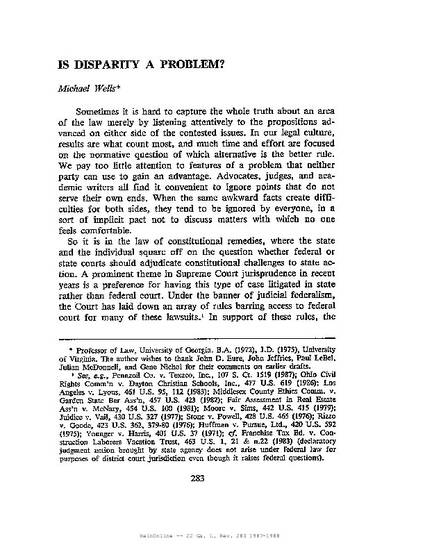
Part I describes aspects of the historical and doctrinal background of judicial federalism. Part II examines the Court's treatment of the parity issue and shows how the Court's ambiguity permits both sides of the debate to avoid revealing their true objectives. Part III demonstrates that some, but not all, of the allocation doctrine can be explained in terms of a conflict between the plaintiff's litigating interest and the state's interest in maintaining the integrity of the state judicial process. A significant body of cases, however, does not fall within this framework. In these cases the Court seems to prefer state court because of, and not in spite of, the lack of parity. Part IV argues that this is a legitimate use of allocation rules, and that the capacity to pursue substantive aims through jurisdictional rules is a strong point of our federal system.
Available at: http://works.bepress.com/michael_wells1/61/

Georgia Law Review, Vol. 22, No. 2 (Winter 1988), pp. 283-336